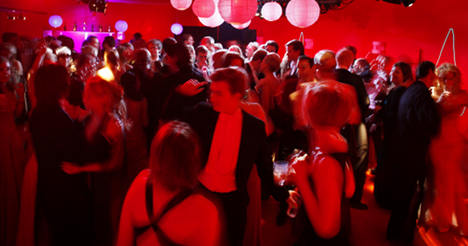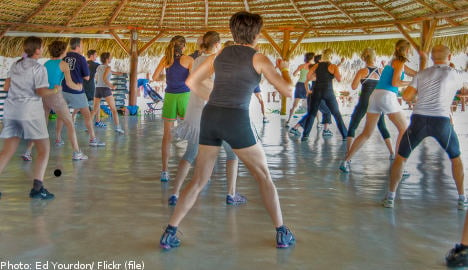Winning a Nobel Prize has long been the ultimate ambition for scientists, authors and economists around the world. The prize ceremony and accompanying banquet form the pinnacle of the academic and social year in the Swedish capital. For students at Stockholm University, Nobel Prize week is particularly special.
By tradition, the university hosts lectures each year by Nobel prize winners. On December 8th, they will will be given by this year’s Nobel Laureates in Physics, Chemistry and Economics. The lectures, which are held in English, are open to the public as well as students, and will take place in the Aula Magna, beginning at 9am.
Another perk of studying at Stockholm is the chance to attend the glittering white-tie Nobel Banquet. This is held at Stockholm City Hall on December 10th and is attended by all the Nobel laureates and the Swedish Royal Family. All current students at Swedish universities are eligible to enter a lottery to win one of fifty two-person tickets to the annual event.
This year the university will be in focus again immediately after the banquet, when the Student Union hosts the Nobel NightCap. This traditional after-party rotates between four Stockholm higher education institutions. The event is the highlight of the year on the student calendar and involves hundreds of volunteers from the four largest universities in Stockholm.
The original idea for the party came about in 1978, when a student at the uni felt that considering the profile and significance of the event and the banquet, festivities ended far too early in the evening, giving guests insufficient time to let their hair down. Since then the event has become one of the most hotly anticipated parties of the year, taking up to 15 months to plan.
“It is the biggest thing for Stockholm University students for four years,” says Nobel NightCap organizer Jenny Hansen. “We started over a year ago, and in recent weeks we have recruited volunteers from KTH, Karolinska Institute, Stockholm School of Economics and here to start building the sets and put the plan into action.”
The theme of the party is always a closely guarded secret and all those involved are sworn to confidentiality, but guests can expect a wonderful surprise, according to Hansen.
“We want to transform the university buildings into a kind of fairytale, where guests feel they are entering another world they have never seen before,” she says.
“There will be different rooms all with different themes, where guests can eat and drink. It is our aim to put on a party where people can relax and be themselves. Regardless of whether they are a laureate or a student, everyone should feel they are getting the same fantastic treatment.”
Not surprisingly, the exclusivity of the event makes it the hottest ticket in town. Although everyone is specially invited, with most people coming directly from the banquet in town, the chance to take part in the event is open to all students at the university, either by volunteering to take part, or via a series of competitions held by the organisers.
“This way everyone gets a fair chance to take part. It was a fun way to get people involved and let everyone know they are welcome” says Hansen.
Meanwhile, for international students, the Nobel NightCap is an ideal opportunity to take part in a unique event. “It is highly important for them,” says Erica Rose, Coordinator for International Students.
“The Nobel Nightcap is a great way for us to get involved in such a huge part of Swedish culture and there are always lots of international students looking to participate in all events. It is a once in a lifetime opportunity,” she says.
This year’s Nobel celebrations are set to be even more special than usual for Stockholm University, as the laureates include one of their own alumni – literature prize winner Tomas Tranströmer. The Swedish poet did his undergraduate studies at Stockholm, joining an exclusive club of Nobel winners from the university.
The first winner of this exclusive group was Svante Arrhenius, who was awarded the 1903 Nobel Prize in Chemistry, for the discovery of the chemical compounds that can conduct electric currents.
Three others from the university went on to win the Nobel Prize for Chemistry; Hans von Euler-Chelpin won it in 1929 for his research on sugar fermentation. 14 years later, George de Hevesy was honoured for developing a way of using isotopes to trace chemical reactions and processes in the body, while in 1995, Paul Crutzen’s Nobel award came for his research on the ozone layer in the atmosphere.
Beyond chemistry, the Economics Prize was awarded to another former Stockholm University student, Gunnar Myrdal in 1974, for his work in monetary and economic theory.
Article sponsored by Stockholm University.



 Please whitelist us to continue reading.
Please whitelist us to continue reading.
Member comments